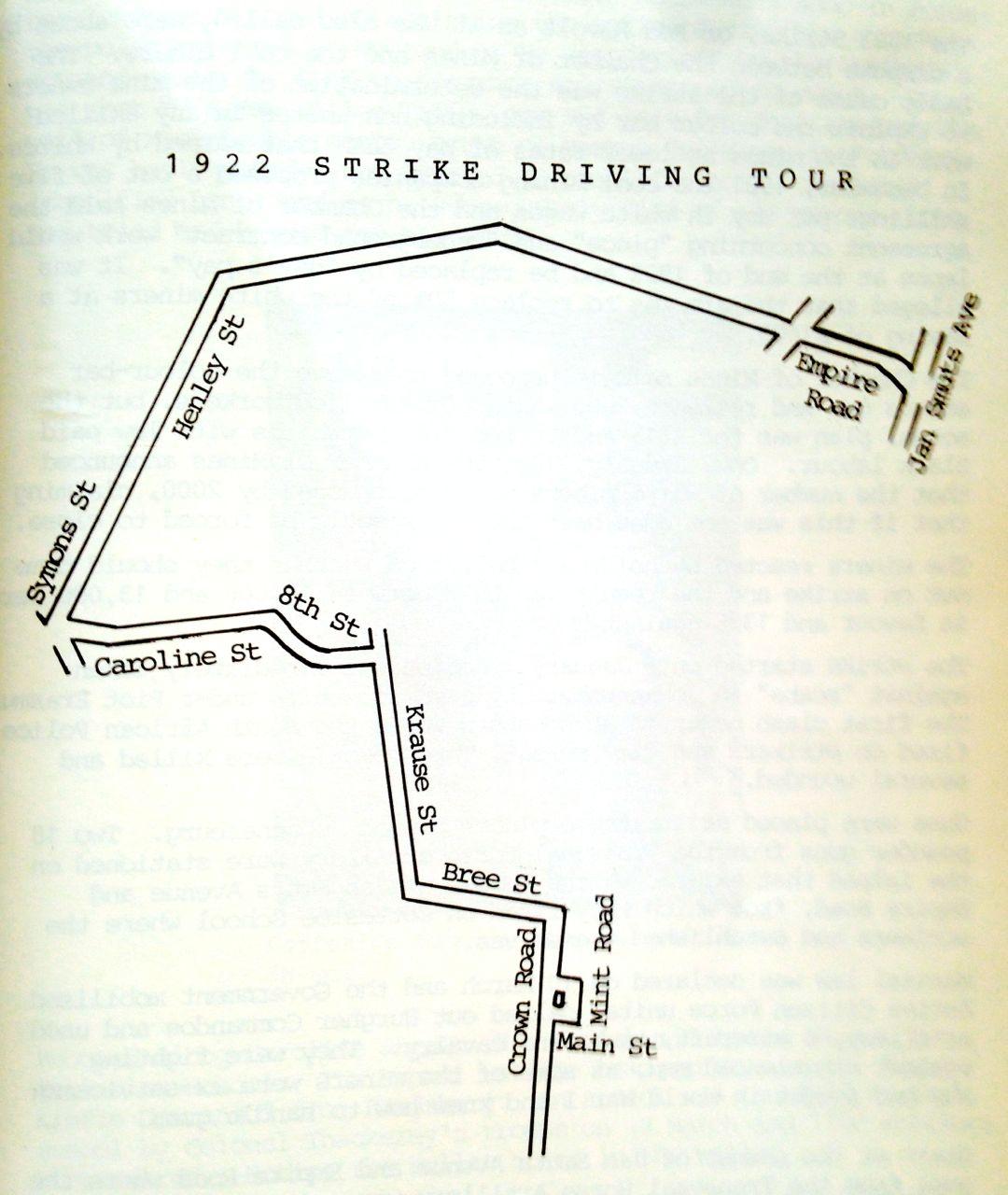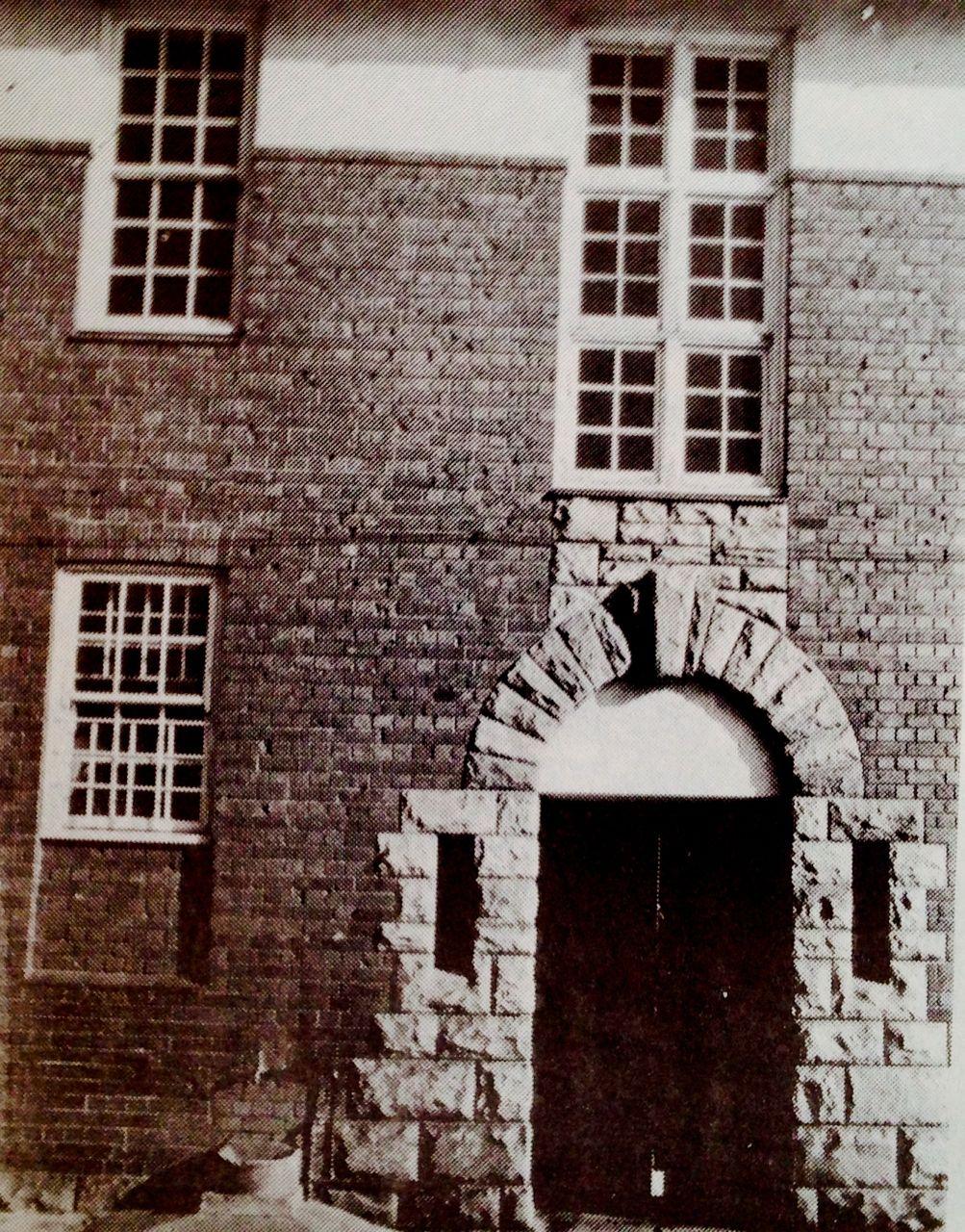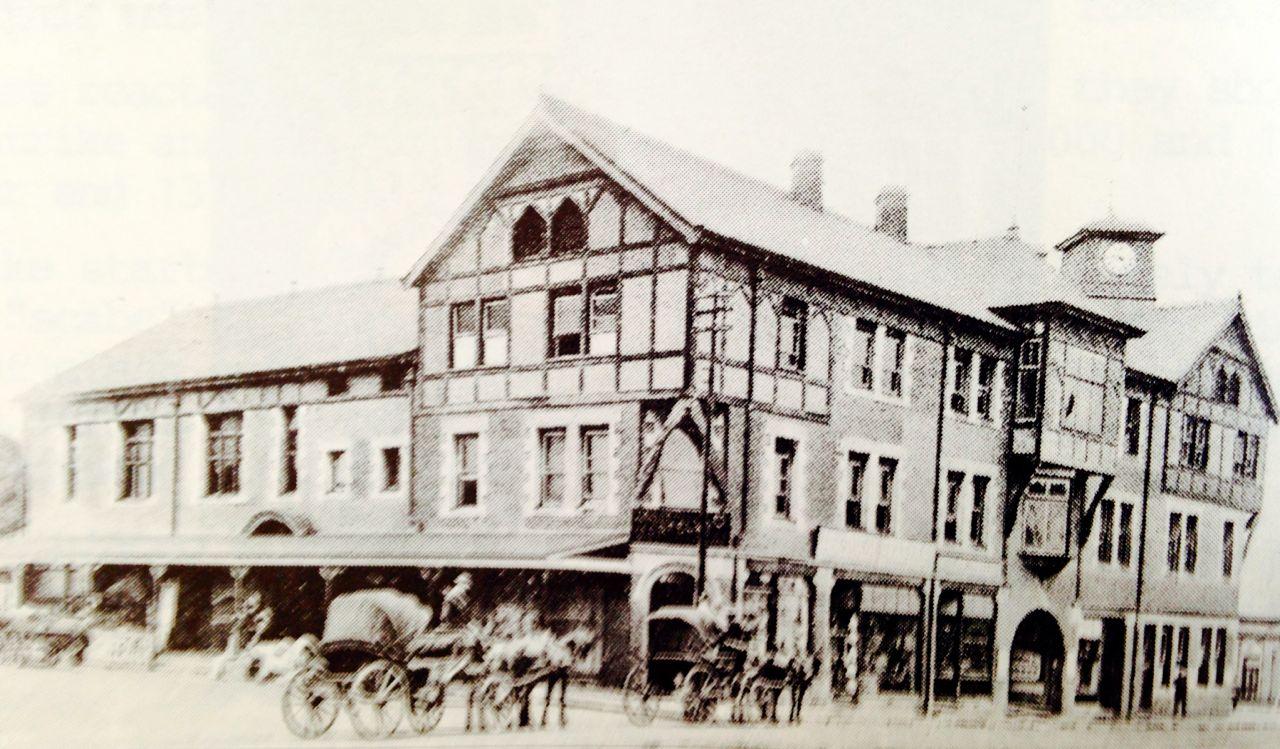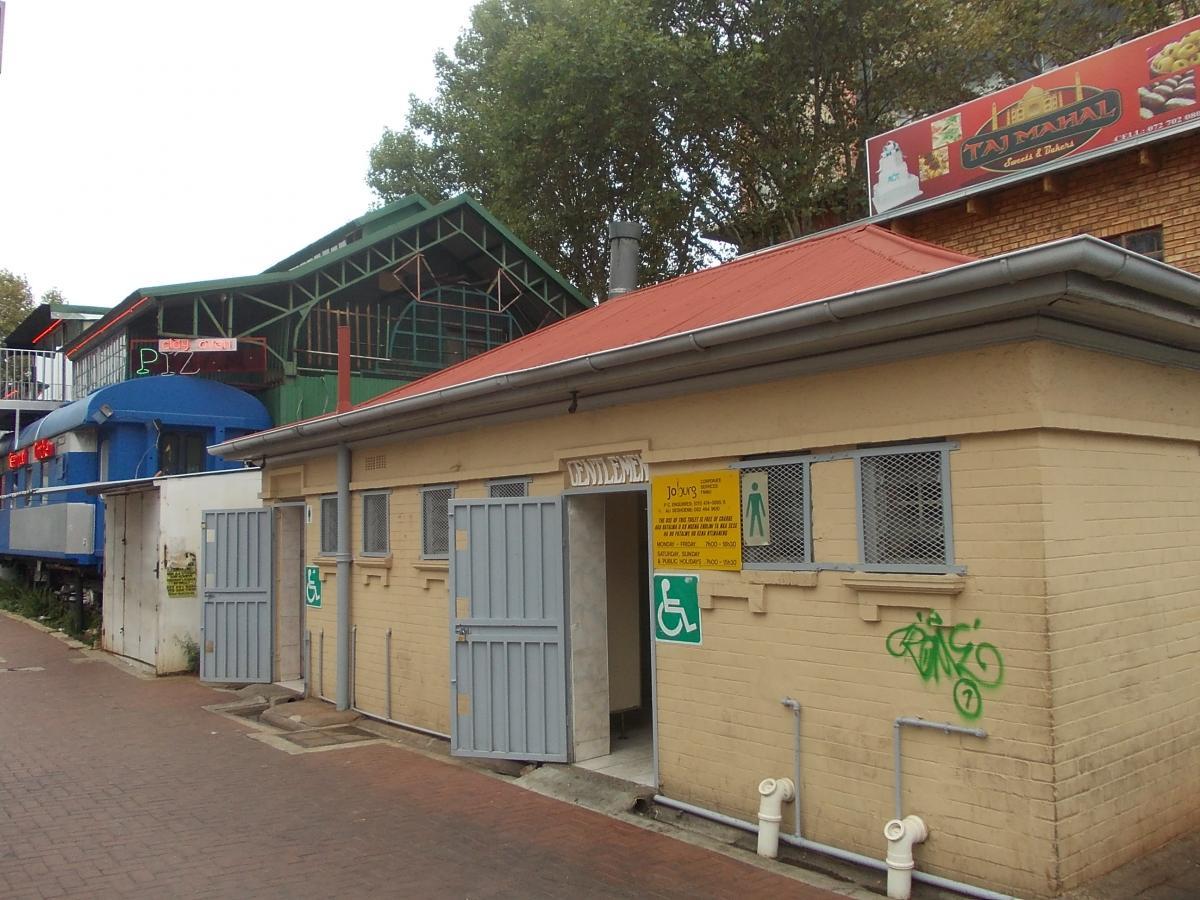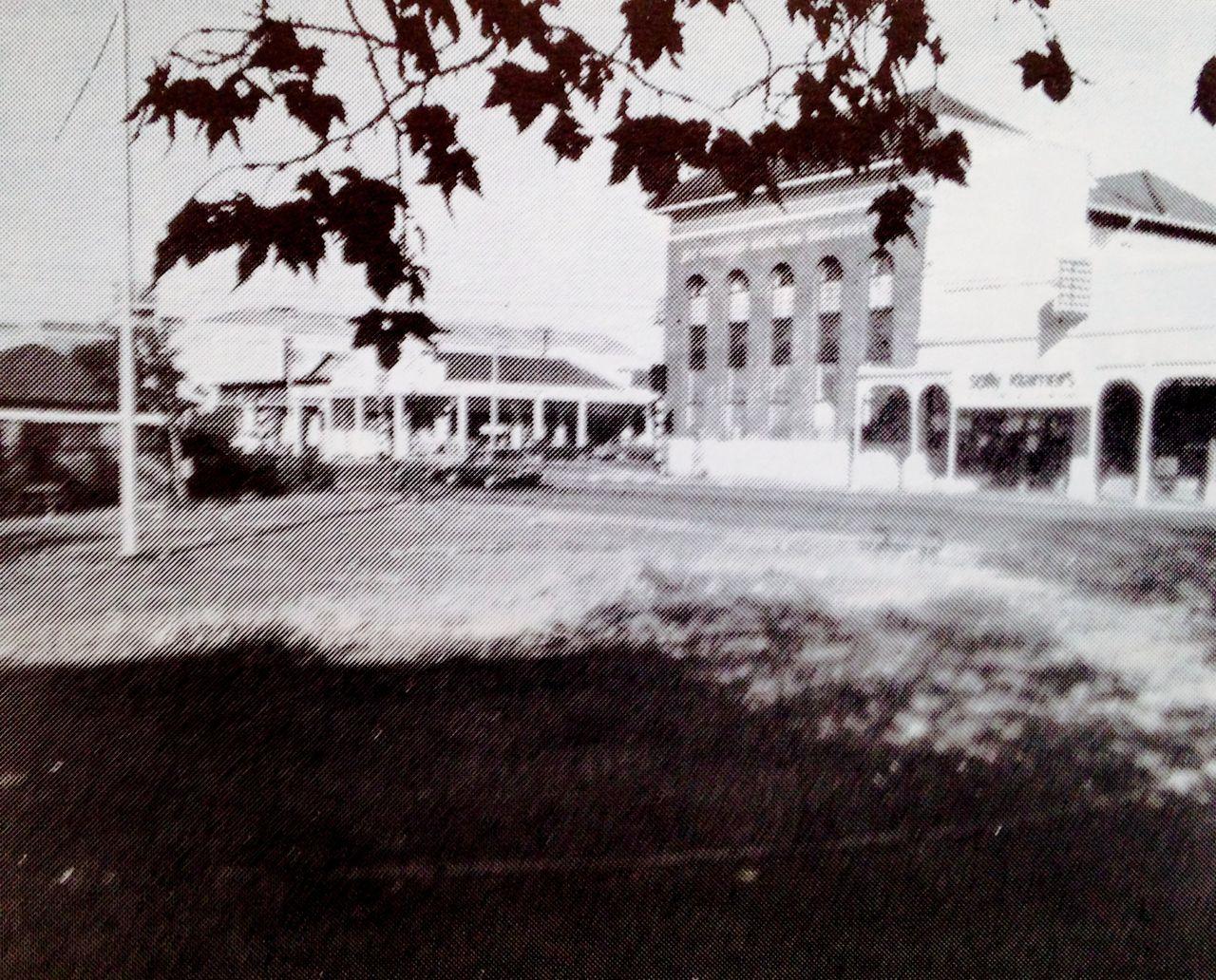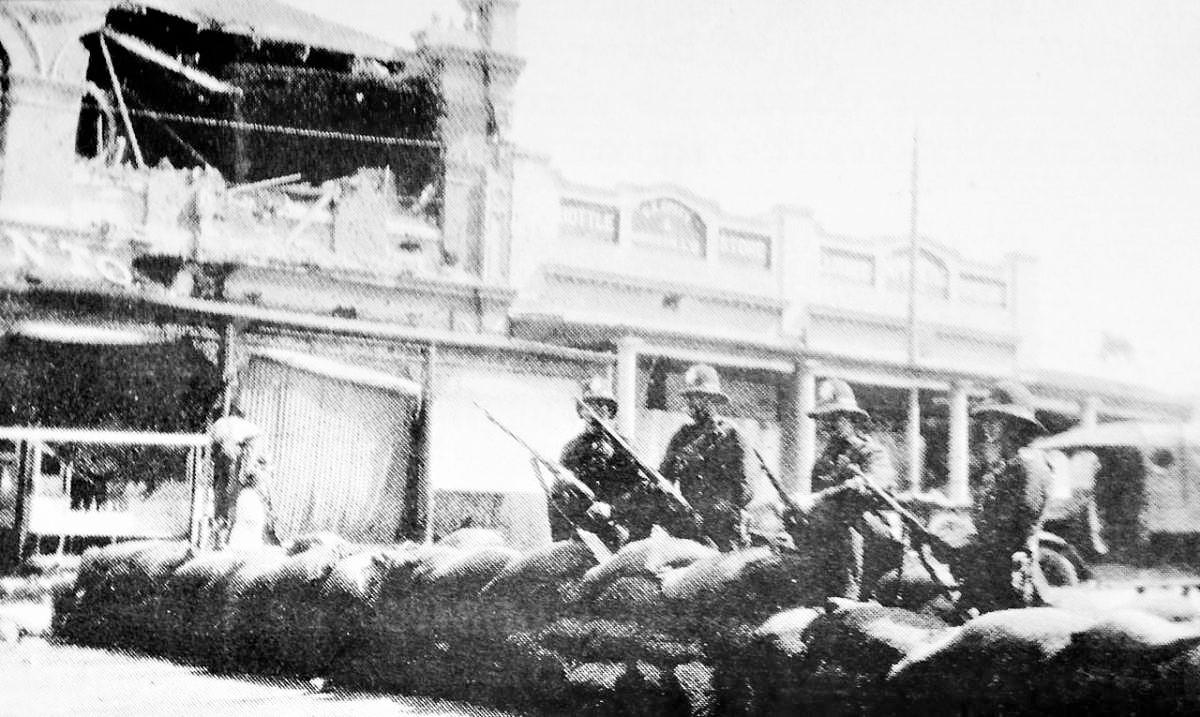
Disclaimer: Any views expressed by individuals and organisations are their own and do not in any way represent the views of The Heritage Portal. If you find any mistakes or historical inaccuracies, please contact the editor.
1922 is often seen as the year that South Africa teetered on the brink of civil war. Fighting broke out across the Rand following a dispute between mine owners and workers. The crisis only ended after martial law was declared and bombs fell from the sky. If you are ever looking for something to do on a Saturday afternoon why not take a drive and recreate a few of the scenes from this turbulent time. The following driving tour was created by the team from the Johannesburg Historical Foundation (now defunct) in the 1990s. It was published in the wonderful booklet Some Historic Drives & Walks of Johannesburg.
The 1922 Strike, or Red Revolt as it was also called, came about due to a dispute between the Chamber of Mines and the coal miners. The basic cause of the strike was the determination of the mine owners to exploit the colour bar by including non-whites in any skilled work in the mines at lower rates of pay than that earned by whites. In December 1921 the coal mining companies proposed a cut of five shillings per day in white wages and the Chamber of Mines said the agreement concerning “piece” and “underground contract” work would lapse at the end of 1922 and be replaced by a “day’s pay”. It was alleged that the aim was to replace 50% of the white miners at a saving of R1000.
The Chamber of Mines said it proposed to remove the colour-bar status quo and retrench 2000 white semi-skilled workers, but the actual plan was for 4345 and to replace the whites with low paid African labour. On 3 January 1922 the Chamber of Mines announced that the number of white miners would be reduced by 2000, claiming that if this was not done half the mines would be forced to close.
The miners reacted by holding a ballot on whether they should come out on strike and the result was that between 12 000 and 13 000 were in favour and 1336 against.
The strike started on 9 January. Action was immediately taken against “scabs” in Johannesburg by commando units under Piet Erasmus. The first clash occurred at Boksburg where the South African Police fired on strikers and vice versa. Three people were killed and several wounded.
Guns were placed at strategic places around Johannesburg. Two 18 pounder guns from the Transvaal Horse artillery were stationed on the island that existed on the corner of Jan Smuts Avenue and Empire Road, from which they fired on Cottesloe School where the strikers had established themselves.
Martial law was declared on 10 March and the Government mobilised Active Citizen Force Units, called out Burgher Commandos and used artillery, 6 aircraft, tanks and cavalry. They were fighting against experienced men, as some of the miners were ex-servicemen who had fought in World War I and knew how to handle guns.
Map of the Driving Tour (Some Historic Drives & Walks of Johannesburg)
Start at the corner of Jan Smuts Avenue and Empire Road where the guns from the Transvaal Horse Artillery were sited. Drive along Empire Road into Henley Street to proceed uphill to Cottesloe School. The SABC grounds served as a military camp and were the headquarters for the artillery forces.
Henley becomes Symons Road. Stop opposite Barnes Road where a shopkeeper called E. Marais once lived. He owned a shop in Fordsburg and was accused of assisting the police during the attack on the police station at Newlands. He was “tried” by the strikers’ commandant in the back of his shop and sentenced to death. He was shot by a man called Taffy Long and left for dead against the wall of MacIntosh’s shops, south of Market Buildings in Fordsburg. He was badly wounded but managed to crawl for help. He later identified Long, and as he subsequently died of his wounds, Long was tried and hanged for his murder.
Proceed along Caroline Street, 8th Street and Krause Street to Cottesloe School. The school was the headquarters of the “Knopkierie Commando” from Fordsburg. An attack was launched on the school by Colonel Thackery’s troops on 12 March and 1700 strikers surrendered.
Cottesloe School - Note bullet holes in the wall (Some Historic Drives & Walks of Johannesburg)
The guns from Empire Road were moved and set up on the playing fields facing Fordsburg Market Square, which was shelled from here.
Proceed through Vrededorp subway and Bree Street into Crown Road where the “Crown and Bell” pub, amongst a host of others was situated and frequented by Cornish miners (Cousin Jacks). At No. 16 was a brothel with mainly French and Austrian prostitutes, who drove along Crown Road in their landaus. The brothel was patronised by many of the senior mining personalities, who would go across to the “Crown & Bell” to quench their thirst.
Drive to the corner of Mint, Main and Central Roads to the Market Square and stop here. The square had a variety of uses; offices, shops and market buildings were here. On Saturday mornings there was a market with stalls. The main entertainment though was the open-air political meetings held every Saturday. Every public figure of any importance, such as General Smuts, General de la Rey, Harry Graumann and Tielman Roos would harangue the crowd among whom were expert hecklers and well-informed political pundits - so the speakers had to be good to survive.
Market Building Fordsburg (Some Historic Drives & Walks of Johannesburg)
As the area was predominantly a mining one, labour relations, wages and underground conditions were of great importance and it was because of this that speakers like Percy Fisher and Harry Spendiff became prominent. Both men were communists and professional trade-unionists who formed a “Council of Action” that aimed to abolish capitalism and control industry by the workers.
The strikers used the market building as offices, the mens’ urinal as a blockhouse and built trenches around the square. 10 000 men were out of work as banks, businesses, shops and offices were ordered to close.
The famous mens' urinal is still with us (The Heritage Portal)
On 10 March Smuts declared Martial Law. Police Stations were attacked, including the one in Fordsburg around the corner from the square in the Central Street. A mounted police contingent was pinned down on the corner of Pioneer and Mint Roads. Burgher Commandos were brought in and a general assault mounted on the square.
A bottle store on the west side of the square was used by the Durban Light Infantry as a machine gun post. The army brought a machine gun into the Standard Bank. Planes flew over the area dropping leaflets to warn people to move out. A refugee camp was set up in Milner Park. Later bombs were dropped, but not very accurately - 3 buildings were hit but not the square.
Standard Bank Building Fordsburg (Some Historic Drives & Walks of Johannesburg)
The strikers in the trenches and in the urinal building surrendered, but when the market building was stormed it was found that Fisher and Spendiff had shot themselves.
Thus ended the attack and the strike. The casualty figures were: State Forces 72 killed and 219 wounded. Strikers 39 killed and 118 wounded. 15 000 miners were out of work and doing relief work for a few shillings a day. Those who were re-employed by the mines had their wages cut by a third.
General Smuts was damaged by the strike and lost to General Hertzog in the 1924 elections.
The strike, however, did lead to the passing of the 1924 Industrial Conciliation Act which outlawed strikes by essential services and laid the basis for arbitration procedures in the event of a disagreement between employers and employees.
Comments will load below. If for any reason none appear click here for some troubleshooting tips. If you would like to post a comment and need instructions click here.

